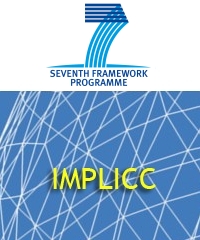| No. | Title | Leader |
| WP 1 | Project Management and Coordination | Hauke Schmidt (MPI-M) |
| WP 2 | Basic scenarios and model response | Michael Schulz (CEA) |
| WP 3 | Sulphur injection into the stratosphere | Mark Lawrence, Andreas Baumgaertner (MPI-C) |
| WP 4 | Engineering marine clouds through injection of sea salt | Jon Egill Kristjansson (UiO) |
| WP 5 | Economic implications of engineering climate | Asbjorn Aaheim (Cicero) |
| WP 6 | Synthesis and dissemination of results | Claudia Timmreck (MPI-M) |
The work plan is designed to reach the main project goal of assessing the effectiveness, side effects and economical implications of different geoengineering options to limit climate change. Two main considerations for the design of the work plan are that a) as numerical climate models are highly imperfect (different models show for instance different climate sensitivities), studies of the effects and side effects should be done using a multi-model approach, and b) studies of geoengineering options should be performed closely linked to climate change studies of the larger scientific community for which the IPCC provides the framework.
Work package 2 is the key instrument of our proposal to ensure comparability of the simulations with the different numerical models (see below) for the different geoengineering methods. In this work package, the general setup of transient numerical scenario simulations for the climate of the 21st century with and without geoengineering will be defined and then used in WP2 itself and in WPs 3 and 4. Furthermore, in WP2 the geoengineering method of extraterrestrial reflectors will be studied in a transient numerical simulation that simply applies a reduction of incoming solar radiation. The set of transient simulations with the different Earth system models will allow a basic comparison of the model responses.
In WPs 3 and 4, the implications of engineering climate through sulphur injections into the stratosphere and through sea salt injections into the marine lower troposphere, respectively, will be studied. During the first phase of these WPs numerical models of reduced complexity will be used to determine in which way the different methods should be implemented to provide large effectiveness in terms of net reductions of solar radiation. The results of these studies will then be used to help specify the setups for the transient numerical simulations (coordinated through WP2). Finally, the transient simulations, as well as additional simulations with complex process models, will be used in WPs 3 and 4 to examine feedbacks to the effects on radiative transfer, as well as to examine the types and magnitudes of anticipated side effects.
In WP5, in the starting phase, costs associated with the technical implementation of geoengineering will be assessed. Results from the numerical Earth system simulations in WPs 2, 3, and 4 will then be fed into an economical numerical model to estimate costs related to climate change under different scenarios with and without applying geoengineering.
In WP6, results from the three Earth system WPs (2 to 4) and the economical WP5 will be collected. A comparison of the different methods will be done with respect to their effectiveness, side effects and economical costs. Associated partners will be included to enlarge this synthesis with respect to ethical and legal aspects of geoengineering. The final results will be disseminated broadly to foster future discussion.



